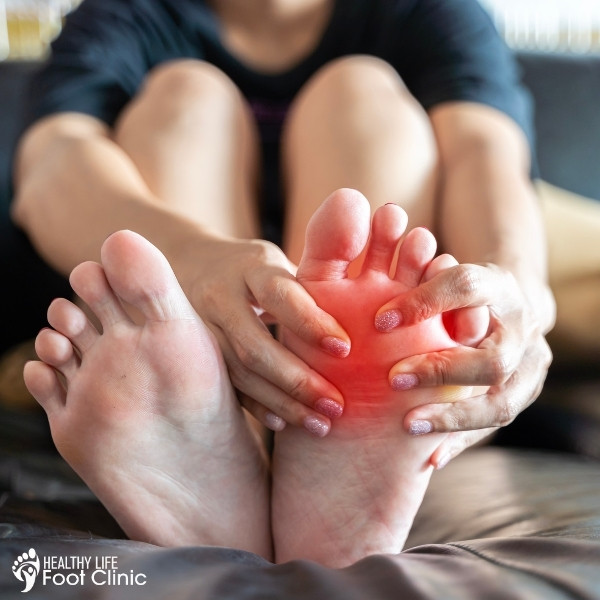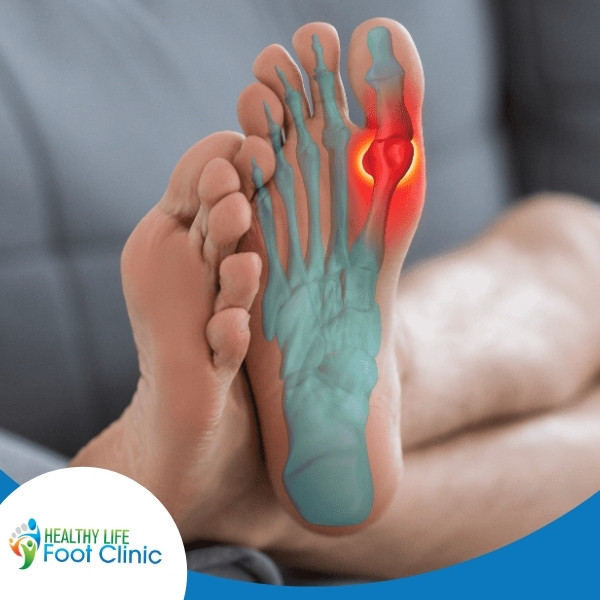Sore Under the Big Toe Joint? It Could Be Sesamoiditis
If you’re noticing a sharp or persistent ache beneath your big toe, especially when pushing off or walking barefoot, you may be experiencing sesamoiditis. This condition is more common than most people realise — and early treatment can make a big difference.
Let’s explore what it is, what causes it, and how to treat it effectively.
What Are the Sesamoid Bones?
The sesamoids are two small, pea-shaped bones located beneath the big toe joint. Unlike most bones, they’re not directly connected to other bones — instead, they sit within tendons, helping them glide smoothly and improving leverage when pushing off during walking or running.
They function much like the kneecap does for the knee — protecting tendons and improving movement mechanics in the forefoot.

What Is Sesamoiditis?
Sesamoiditis is an overuse condition involving persistent inflammation of the tendons connected to the small sesamoid bones beneath the big toe joint. In a typical foot, each sesamoid is a tiny, pea-sized bone positioned on the underside of the forefoot, just behind the big toe. These bones sit on the inner side of the ball of the foot and are a potential source of pain often grouped under the broad term metatarsalgia.
Functionally, sesamoid bones act like miniature pulleys, allowing tendons to glide smoothly and efficiently. They resemble small kneecaps and help improve the mechanical leverage of tendons during weight-bearing movements. Sesamoiditis refers to the inflammation of these bones and their associated tendons, typically due to repetitive stress or excessive pressure in that area.
This condition is more frequently seen in athletes and dancers, particularly those involved in high-impact or toe-loading activities. It’s also more likely to occur in individuals with certain foot shapes — particularly those with more prominent or rigid structures in the forefoot. The underlying cause is usually the overuse or overloading of the tendons connected to the sesamoid bones.
Need a Podiatrist for Sesamoiditis?
Find Out More About Healthy Life Foot Clinic’s Care Guarantee
Contact Us or Book Online 24/7
What Causes Sesamoiditis?
There are several contributing factors that may lead to sesamoiditis:
-
High-impact activity like running, dancing, or sports involving jumping
-
Footwear with poor forefoot cushioning or high heels that shift weight forward
-
Foot mechanics such as high arches or prominent metatarsal heads
-
Sudden increase in training or workload
-
Anatomical variations, such as a bipartite sesamoid (where the bone is naturally in two parts)
In some cases, a single trauma or impact may trigger symptoms. However, it’s more commonly caused by ongoing repetitive stress.
What Does Sesamoiditis Feel Like?
Pain from sesamoiditis is typically described as a dull, ongoing ache beneath the big toe joint. It often comes and goes, flaring up with certain types of footwear or during weight-bearing activities that place extra stress on the forefoot.
The discomfort arises when the tendons around the sesamoid bones become irritated or inflamed. Pain is usually felt under the big toe joint, around the inner part of the ball of the foot. Because sesamoiditis tends to develop gradually, symptoms may include low-grade swelling or occasional bruising. However, in cases where a sesamoid fracture is present, the pain is often more immediate and intense.
Pain is most noticeable during toe movement, particularly when bending or extending the big toe, and tends to worsen with high-impact activities such as jumping, running, or dancing.

How Is It Diagnosed?
To properly diagnose a sesamoid injury, your podiatrist will begin with a thorough physical examination of the foot — with particular attention to the big toe joint. This hands-on assessment may include checking joint mobility, evaluating gait patterns, and reviewing your footwear for wear patterns or contributing factors.
Because several forefoot conditions can mimic the symptoms of sesamoiditis, identifying the exact cause of pain can sometimes be challenging. Diagnostic imaging such as X-rays, or in more complex cases, advanced imaging like MRI or ultrasound, may be required to confirm the diagnosis.
Common conditions that may present similarly include:
-
Turf toe – a soft tissue injury around the big toe joint, usually caused by forceful hyperextension
-
Sesamoid fracture – a break in one of the sesamoid bones, typically resulting from direct trauma or heavy impact to the forefoot
Getting the diagnosis right is essential to ensure the appropriate treatment plan is prescribed, tailored to the specific condition affecting the joint.
Need a Podiatrist for Sesamoiditis?
Find Out More About Healthy Life Foot Clinic’s Care Guarantee
Contact Us or Book Online 24/7
What Are the Treatment Options?
Treatment for sesamoiditis typically begins with non-surgical management, and early intervention from a podiatrist is strongly recommended before considering any surgical approach. The right treatment plan will depend on the severity and type of injury, but often includes the following options:
Taping and Padding
Targeted padding or strapping can help offload the sesamoid bones by reducing pressure under the big toe joint. Your podiatrist may use a specialised pad designed to relieve strain and support healing.
Joint Mobilisation
Manual therapy, along with prescribed range of motion exercises, can help restore flexibility and function in the joint. This may be performed in-clinic and continued at home to improve mobility and reduce stiffness.
Footwear Modifications
Wearing the right shoes is key to managing sesamoiditis. Footwear with good cushioning, supportive soles, and minimal forefoot pressure is ideal. Your podiatrist can guide you on appropriate shoes for both everyday wear and sport-specific activities.
Oral Medication
Anti-inflammatory medications (NSAIDs) may be used short-term to manage pain and reduce inflammation during the acute phase of the condition.
Corticosteroid Injections
In certain cases, a corticosteroid injection may be administered to reduce persistent inflammation. These injections are usually done under imaging guidance (such as ultrasound) to ensure precise delivery to the affected area.
Immobilisation
If a sesamoid fracture or severe inflammation is present, a walking boot or stiff-soled shoe may be prescribed to completely offload the area and allow healing. Temporary immobilisation is often effective in settling acute symptoms.
Custom Orthotics
Sesamoid-specific orthotics are custom-made to redirect pressure away from the injured sesamoids. These devices are designed to offload the forefoot and support proper biomechanics, helping reduce pain and encourage tissue recovery.
Surgical Intervention
Surgery is rarely required and typically reserved for cases where conservative care has failed. If needed, your podiatrist can explain the surgical options available and refer you to a specialist with experience in sesamoid procedures.
When Should You See a Podiatrist?
If you’ve had persistent pain under your big toe for more than a few days — especially if it worsens with movement or weight-bearing — it’s time to seek professional help. Early intervention means quicker recovery and fewer disruptions to your lifestyle.
Our team can help identify the cause of your pain and provide a tailored treatment plan so you can get back to doing what you love — pain-free.

Four Tips to Help Prevent Sesamoiditis
While not all causes of sesamoiditis can be avoided, there are several simple steps you can take to reduce your risk — especially if you lead an active lifestyle:
1. Choose Supportive Footwear
Wearing shoes with good cushioning and a firm sole can help reduce the amount of pressure placed on the ball of your foot — particularly under the big toe joint. Avoid high heels or minimalist footwear that increase forefoot loading.
2. Use Orthotic Support if Needed
Custom orthotics or specialised insoles can help distribute pressure more evenly across your foot, especially if you have high arches, a prominent forefoot, or biomechanical imbalances.
3. Ease Into New Activities
When starting a new sport, training program, or returning after time off, increase your activity levels gradually to avoid placing sudden stress on the sesamoids.
4. Stretch and Strengthen Regularly
Maintaining flexibility and strength in the feet, ankles, and lower legs supports proper foot mechanics and reduces strain on key structures like the sesamoids.
Need a Podiatrist for Sesamoiditis?
Find Out More About Healthy Life Foot Clinic’s Care Guarantee
Contact Us or Book Online 24/7

